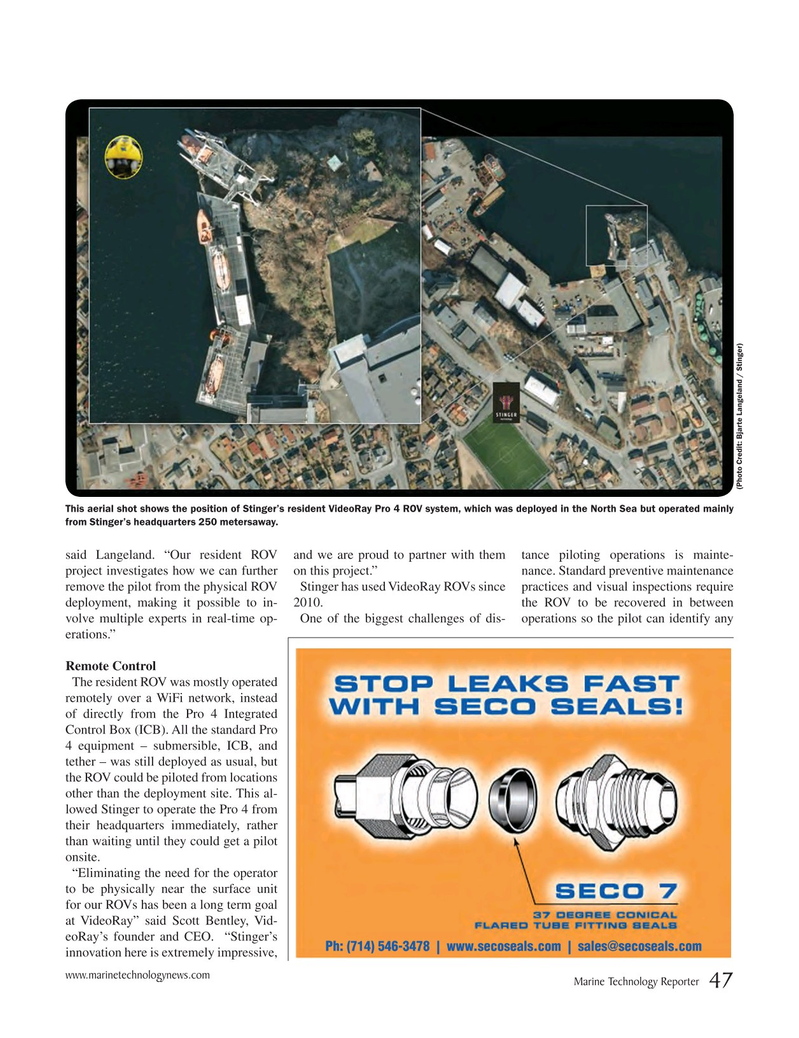
Page 47: of Marine Technology Magazine (September 2015)
Ocean Observation: Gliders, Buoys & Sub-Surface Networks
Read this page in Pdf, Flash or Html5 edition of September 2015 Marine Technology Magazine
(Photo Credit: Bjarte Langeland / Stinger)
This aerial shot shows the position of Stinger’s resident VideoRay Pro 4 ROV system, which was deployed in the North Sea but operated mainly from Stinger’s headquarters 250 metersaway. said Langeland. “Our resident ROV and we are proud to partner with them tance piloting operations is mainte- project investigates how we can further on this project.” nance. Standard preventive maintenance remove the pilot from the physical ROV Stinger has used VideoRay ROVs since practices and visual inspections require deployment, making it possible to in- 2010. the ROV to be recovered in between volve multiple experts in real-time op- One of the biggest challenges of dis- operations so the pilot can identify any erations.”
Remote Control
The resident ROV was mostly operated remotely over a WiFi network, instead of directly from the Pro 4 Integrated
Control Box (ICB). All the standard Pro 4 equipment – submersible, ICB, and tether – was still deployed as usual, but the ROV could be piloted from locations other than the deployment site. This al- lowed Stinger to operate the Pro 4 from their headquarters immediately, rather than waiting until they could get a pilot onsite.
“Eliminating the need for the operator to be physically near the surface unit for our ROVs has been a long term goal at VideoRay” said Scott Bentley, Vid- eoRay’s founder and CEO. “Stinger’s
Ph: (714) 546-3478 | www.secoseals.com | [email protected] innovation here is extremely impressive, www.marinetechnologynews.com
Marine Technology Reporter 47
MTR #7 (34-49).indd 47 MTR #7 (34-49).indd 47 9/1/2015 11:48:08 AM9/1/2015 11:48:08 AM

 46
46

 48
48
